Hailing from Georgia and Detroit to Madagascar, Morocco, and Scotland, these contemporary artists have all poured global experience, found far from home, into their inspired practices. Each artist reveals to CULTURED how the places they've found inspiration have impacted their approach to their most recent artworks—now on display at U.S. and international galleries.

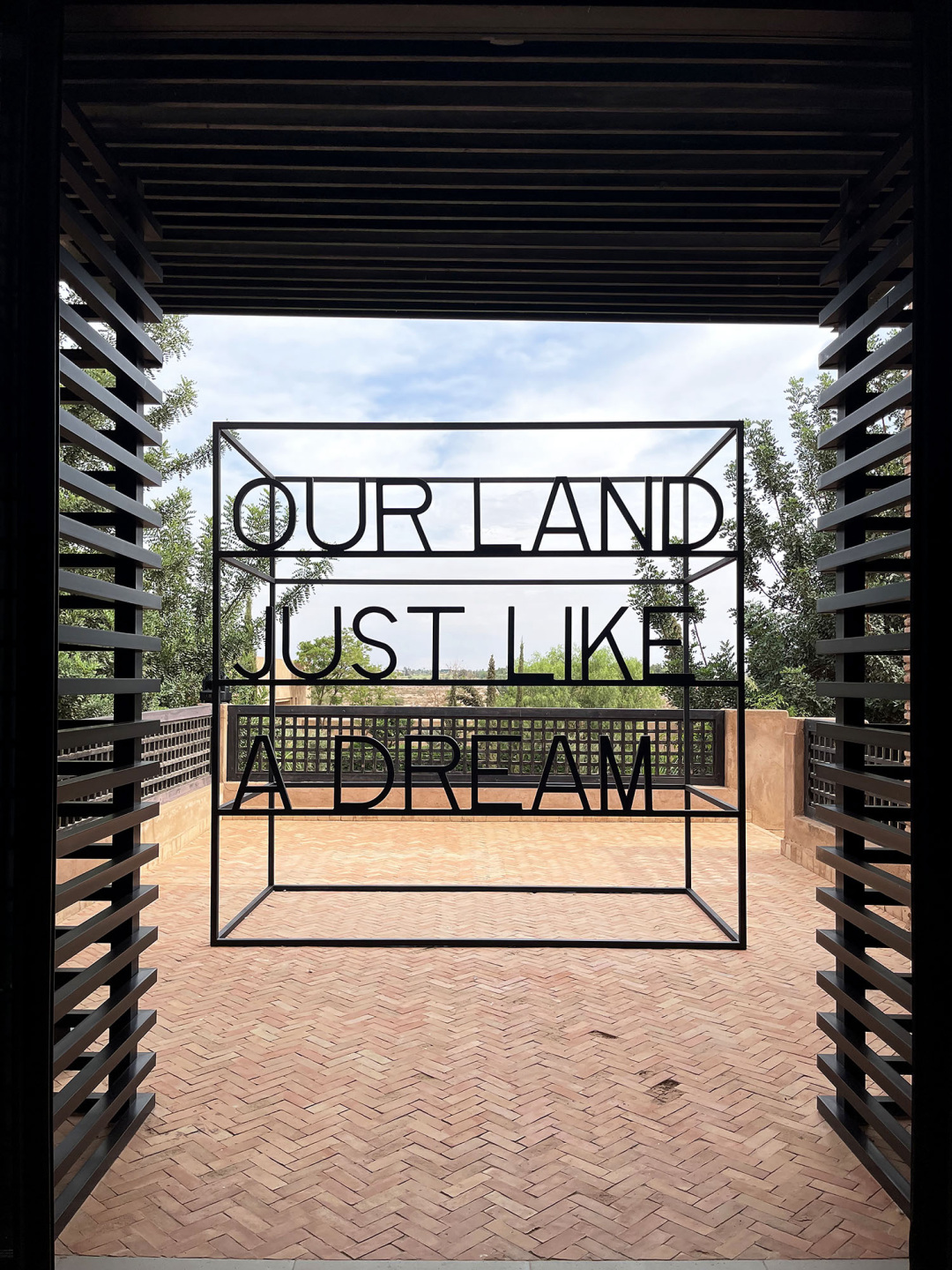
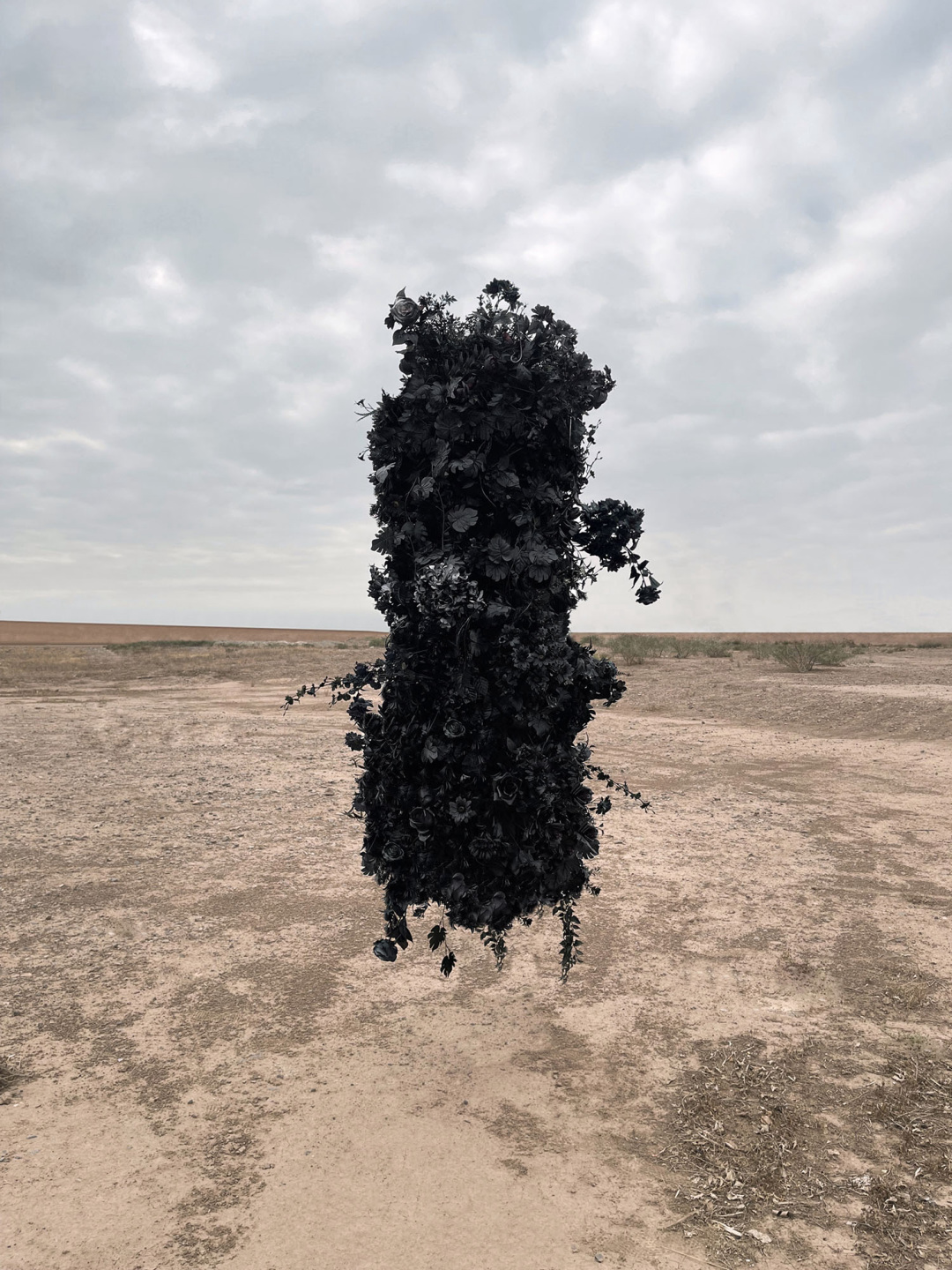
Joël Andrianomearisoa
Joël Andrianomearisoa is no stranger to creative collaboration. He has worked for years with the master embroiderers of his native city of Antananarivo in Madagascar, with textile weavers in Udaipur, India, and loom-setters in Aubusson, France. Though his cross-continental practice is well established, there’s always room for new surprises. In "OUR LAND JUST LIKE A DREAM," the Malagasy artist’s current solo exhibition at The Museum of African Contemporary Art Al Maaden (MACAAL) in Marrakesh, Moroccan inspirations loom large.
The exhibition, born of an exploratory residency at MACAAL during which Andrianomearisoa produced original works in collaboration with local artisans, explores the artist’s fascination with the region’s ancestral textile arts and ceramics. Wickerwork, metalwork, ceramics, and embroidery come together in installations, sculptures, and drawings.
“Marrakesh feels to me like a microcosm—all who come here seem to be inspired by it,” he says. “I was fascinated by that idea. I have my studio and my practice in Paris and Antananarivo, so the chance to create work around my experience in Marrakesh brought a new perspective to my work.”
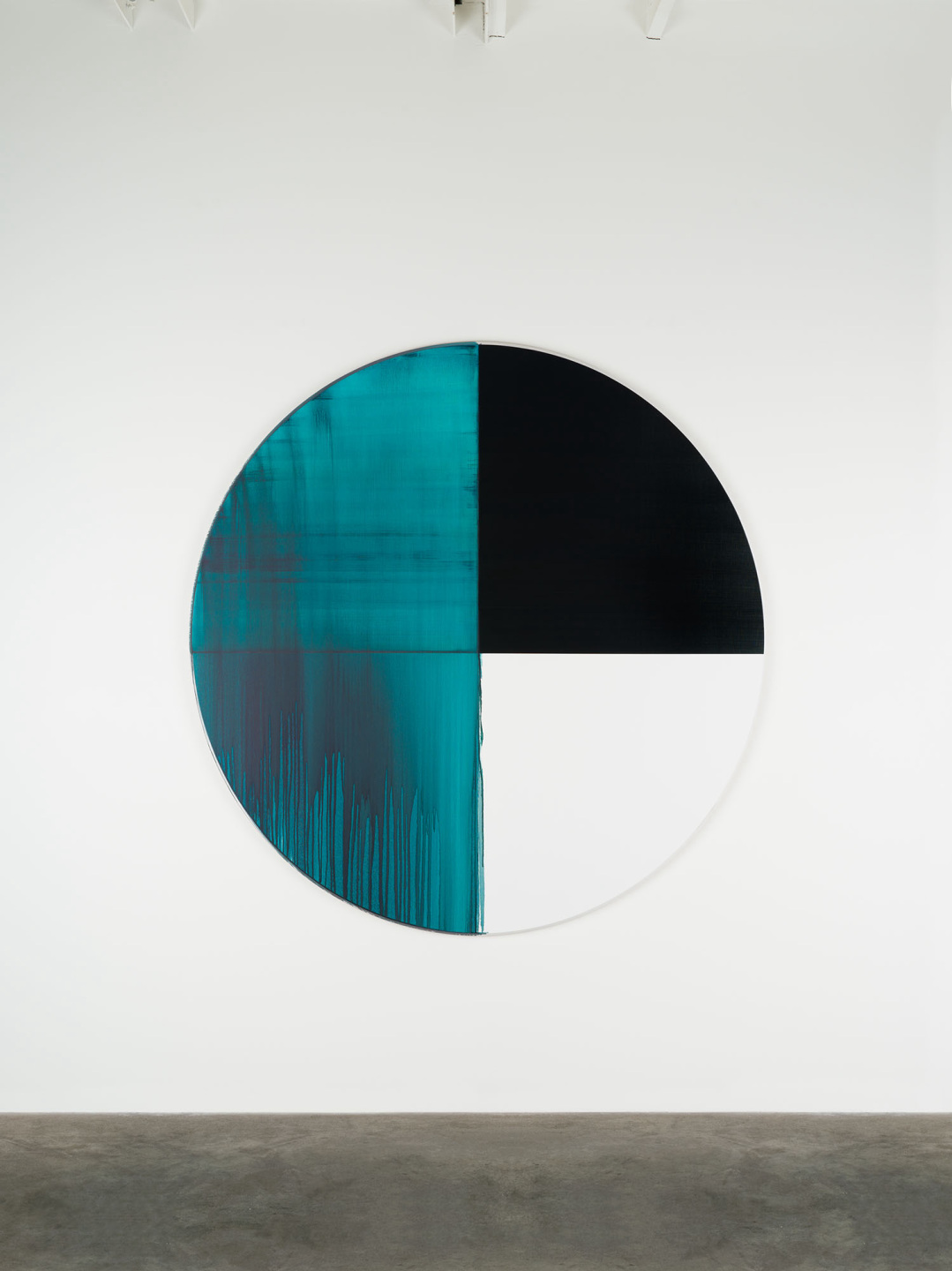

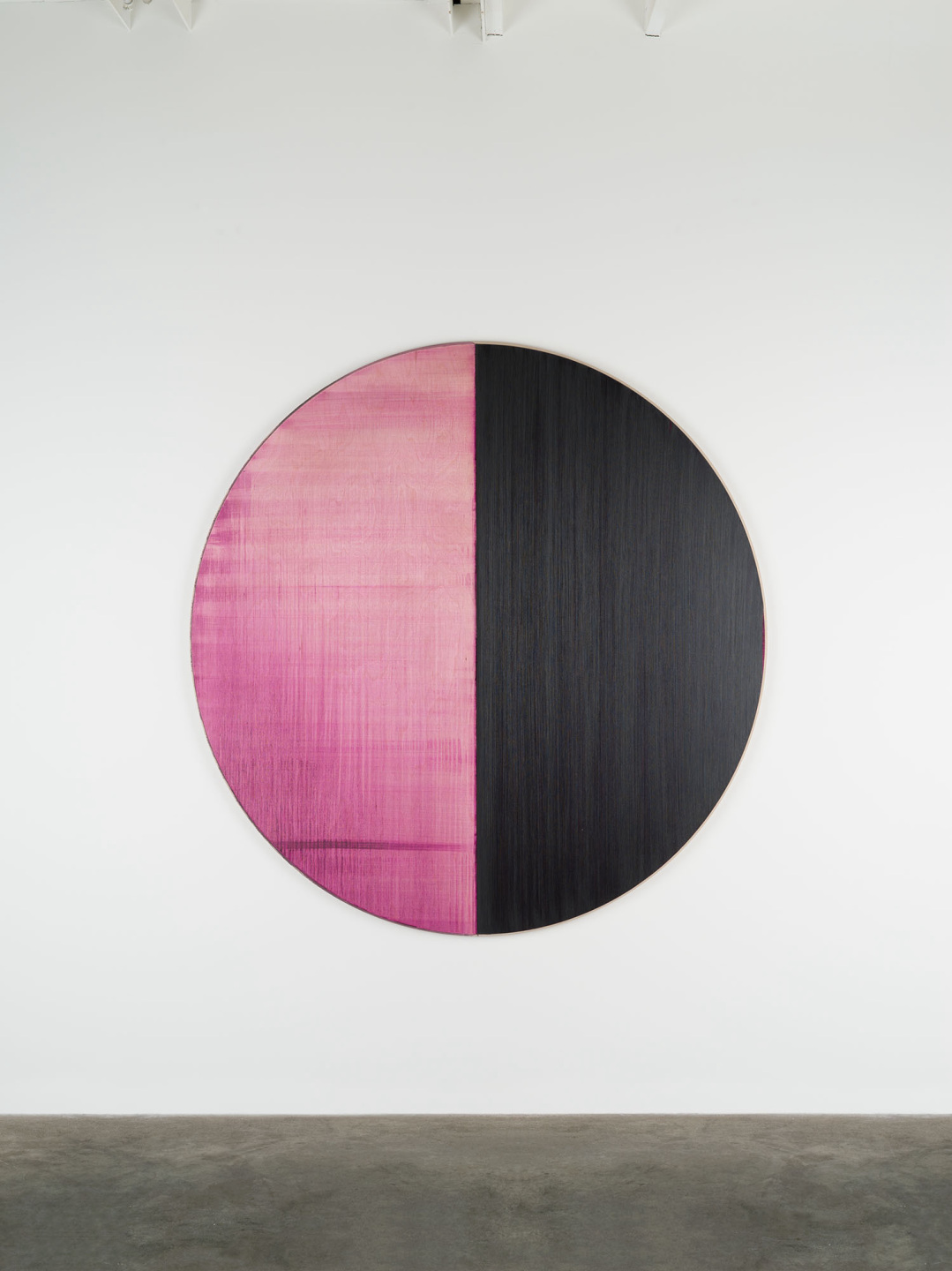
Callum Innes
Callum Innes splits his time between studios in Edinburgh and Oslo. When the pandemic forced the Scottish native to hunker down in the Norwegian capital, he developed his latest body of work, "Tondos." On view at the Sean Kelly Gallery in New York City through Dec. 17, the exhibition—composed entirely of works in the circular form of a Renaissance tondo—is inspired by the color palettes of both the Scottish and Norwegian countrysides. “My work is about light and space, as well as landscape,” Innes says, “Scotland is beautiful, but Norway is very different, so I’ve taken certain things—the light and color—from that.”
Spending time in both environments requires Innes to continually revisit the works he leaves in each studio, approaching them with a fresh perspective upon his return. “My studio in Oslo is quite different to the one in Edinburgh,” he says. “It’s smaller and the light is different. This has come into the work in a very quiet way through the colors—and even the way I make a painting.”
The artist’s love affair with the circular form began when he was asked to paint the bottom of a whisky barrel for a charity auction. “It’s quite challenging to work in a circle—how you look at perspective and the physical space in a painting,” he says. “It was something I found interesting, so I expanded on it. I used the paintings I was working on in Oslo over two years and put them into this form.” The tondo, which offers the viewer a glimpse into another world, seems to be the perfect format for the intrepid Scottish painter.
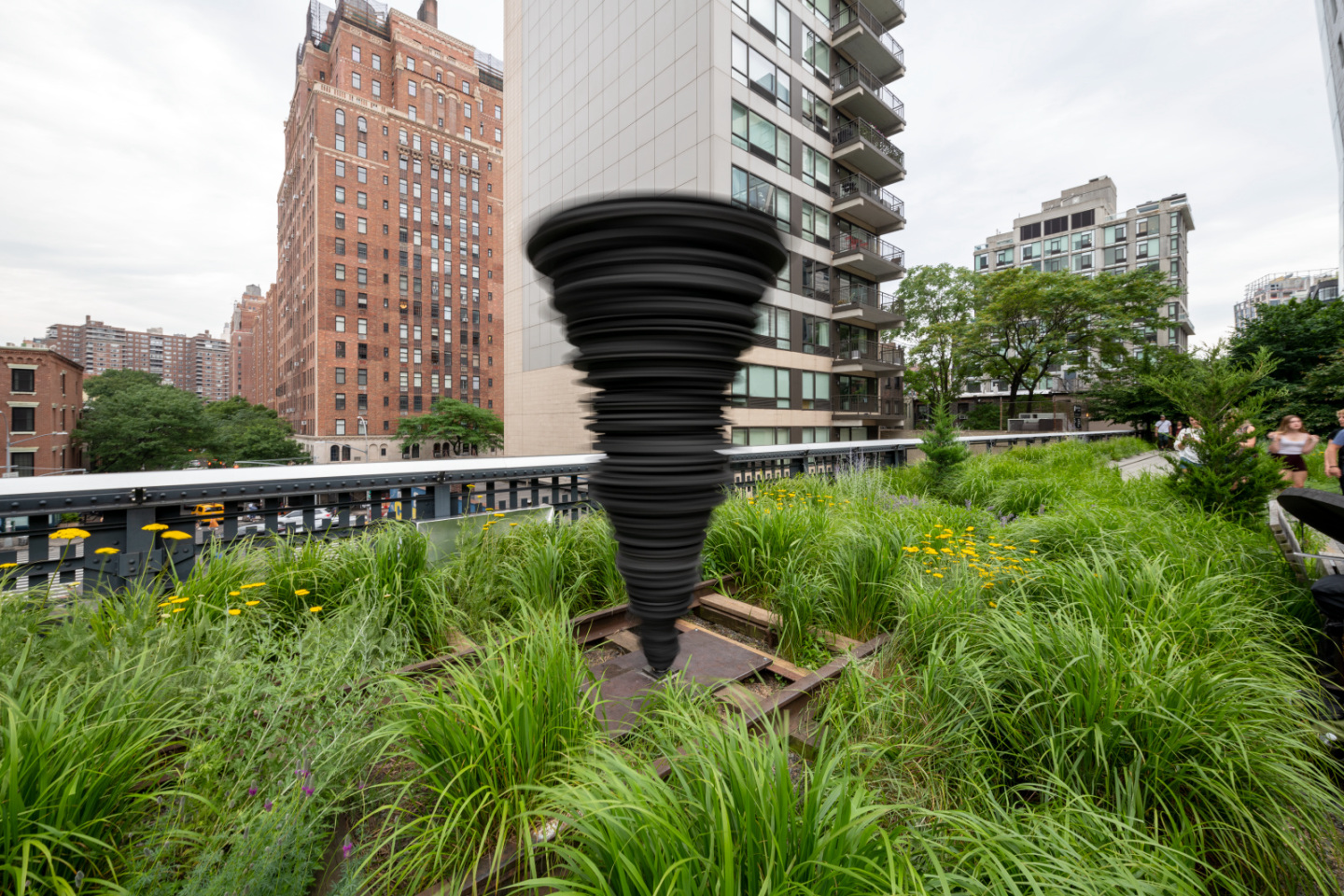
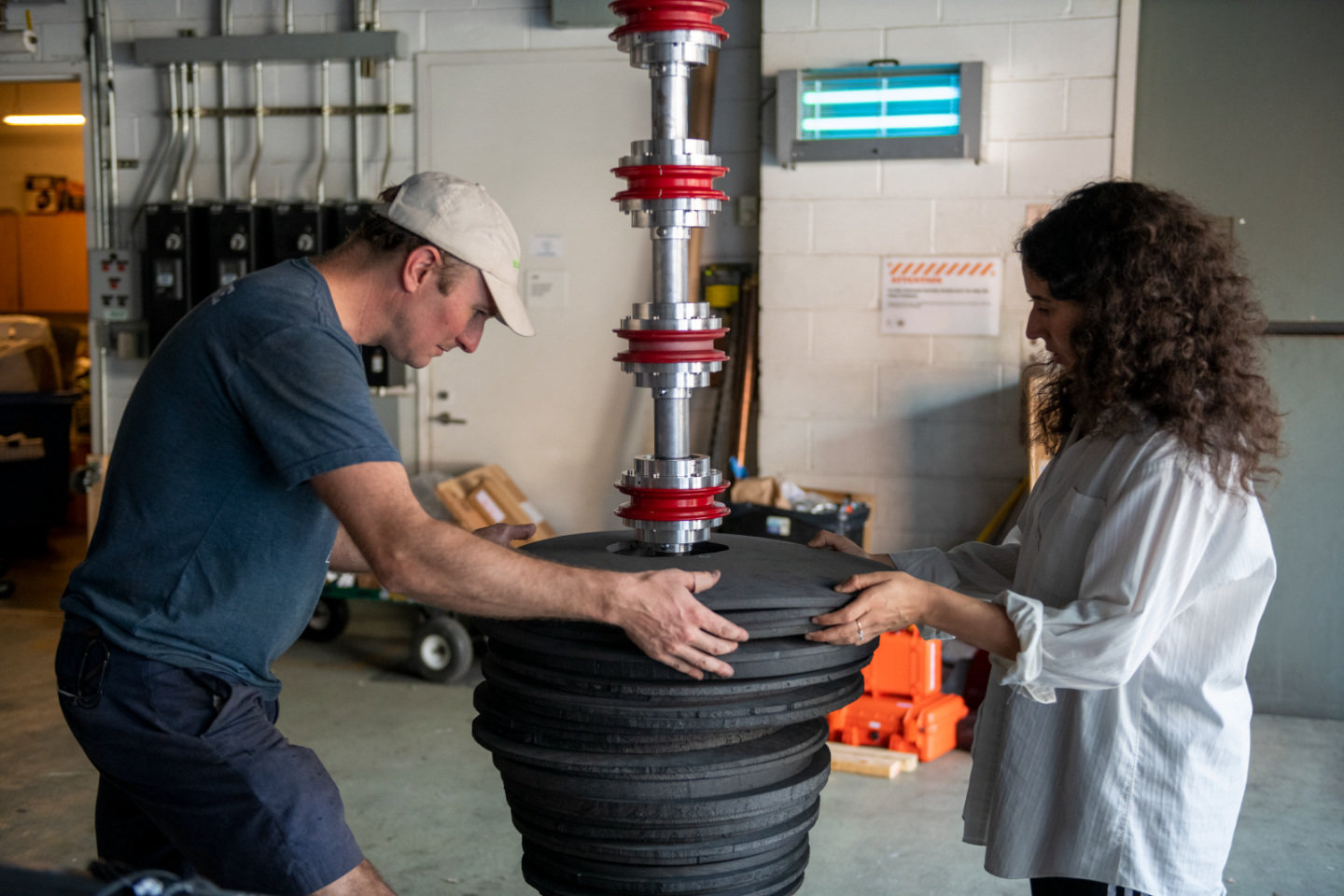
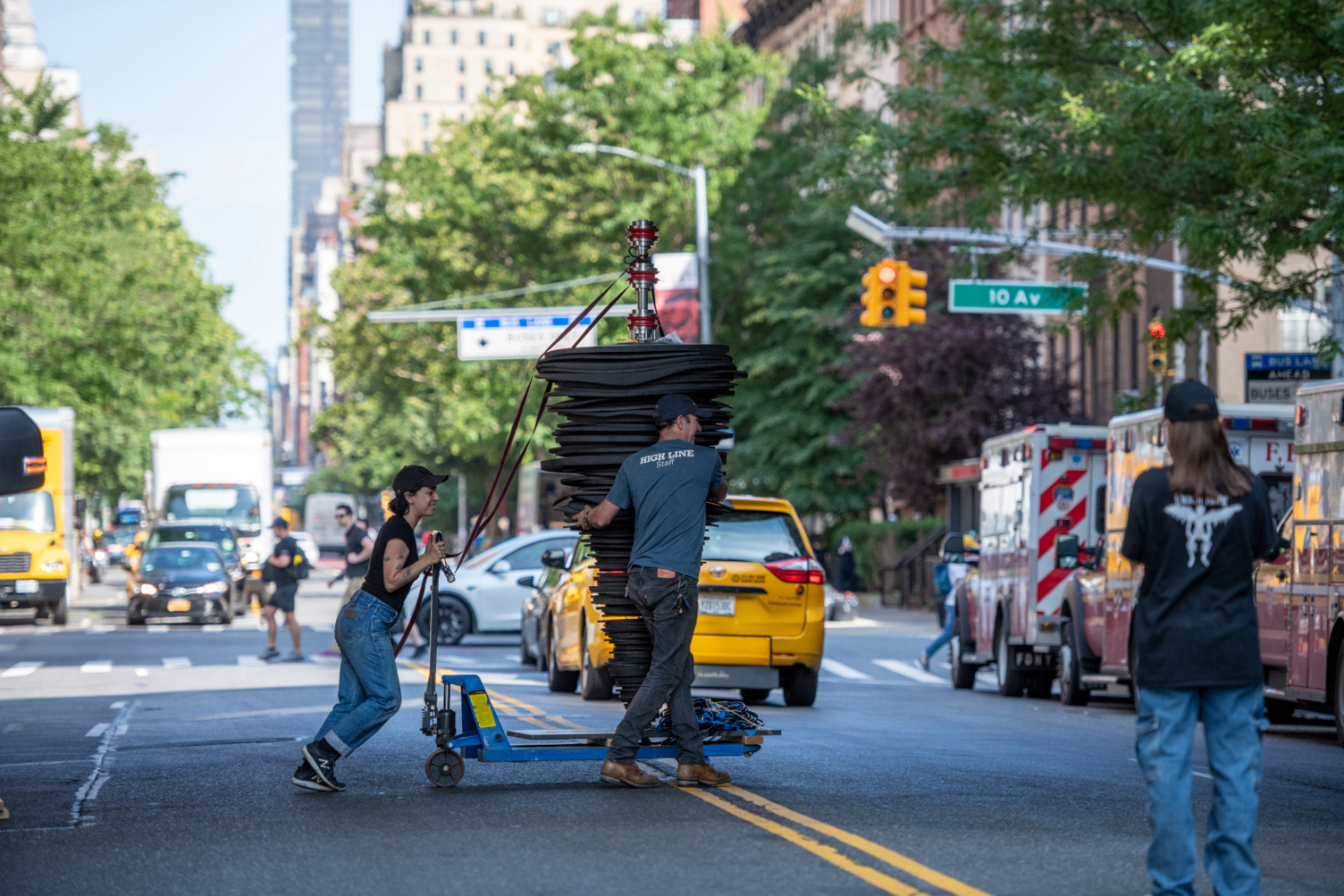
Meriem Bennani
Morocco-born, New York-based artist Meriem Bennani channels the frenetic energy of her adopted home in all of her immersive installation works. Her latest, Windy, was co-commissioned by High Line Art and Audemars Piguet Contemporary, and is on view on the High Line through May 2023. The sculpture, situated at the heart of Manhattan’s elevated park, is inspired by the shape and movement of a tornado, spinning and shifting in response to the elements. Nine feet tall and built from 200 stacked UV and waterproof foam disks, Windy is built to withstand all seasons.
The piece, which translates the visceral physicality of Bennani’s signature film and animation works into a kinetic and unpredictable 3-D form, represents a new direction for Bennani’s practice. It's a project that she hopes will trigger the same feelings of delight and madness in its viewers that she first felt when she first arrived in Manhattan. “I hope that visitors will…be swept away by its chaotic energy,” she says, “echoing the energy of New York City and the High Line.”
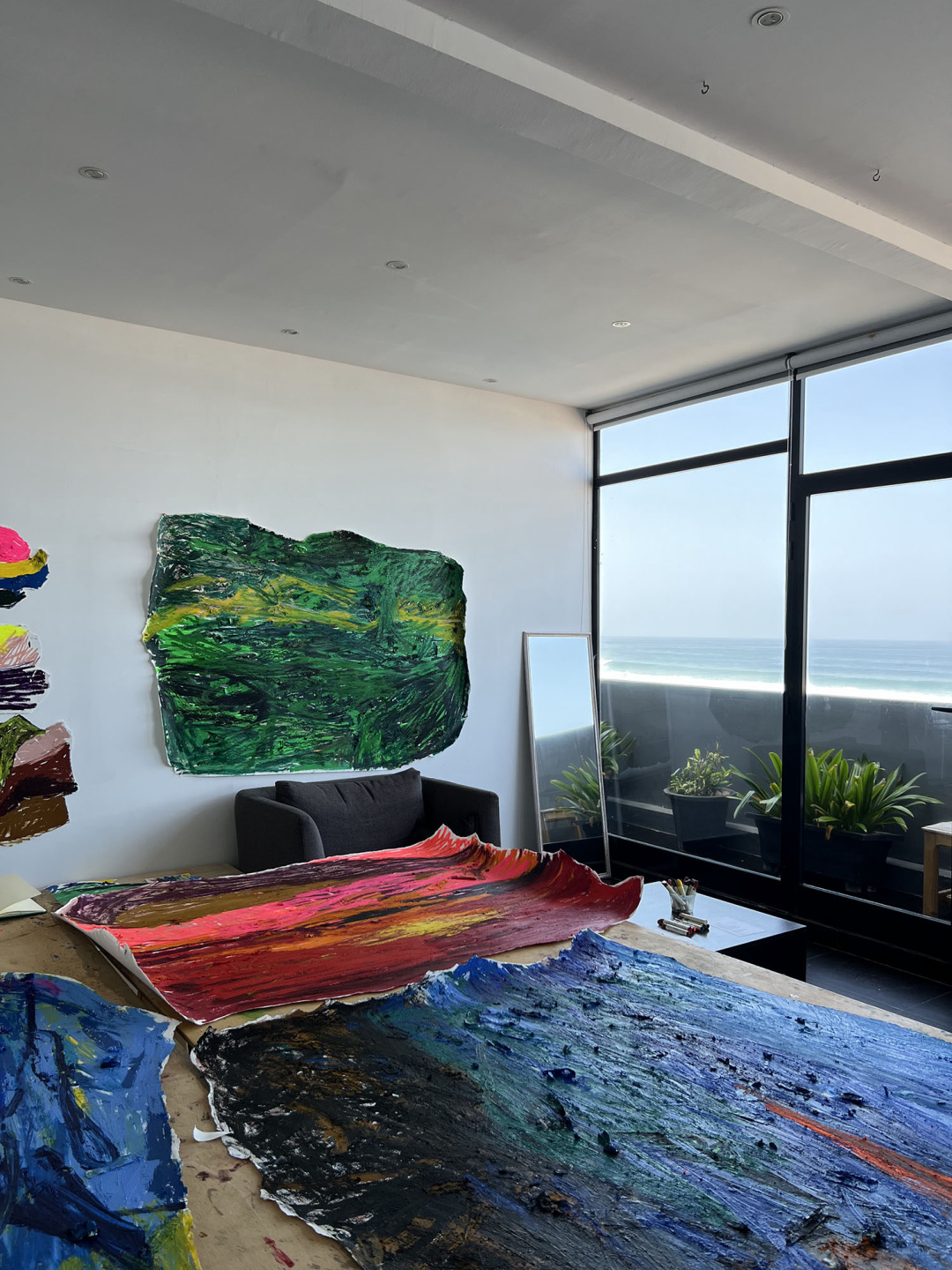
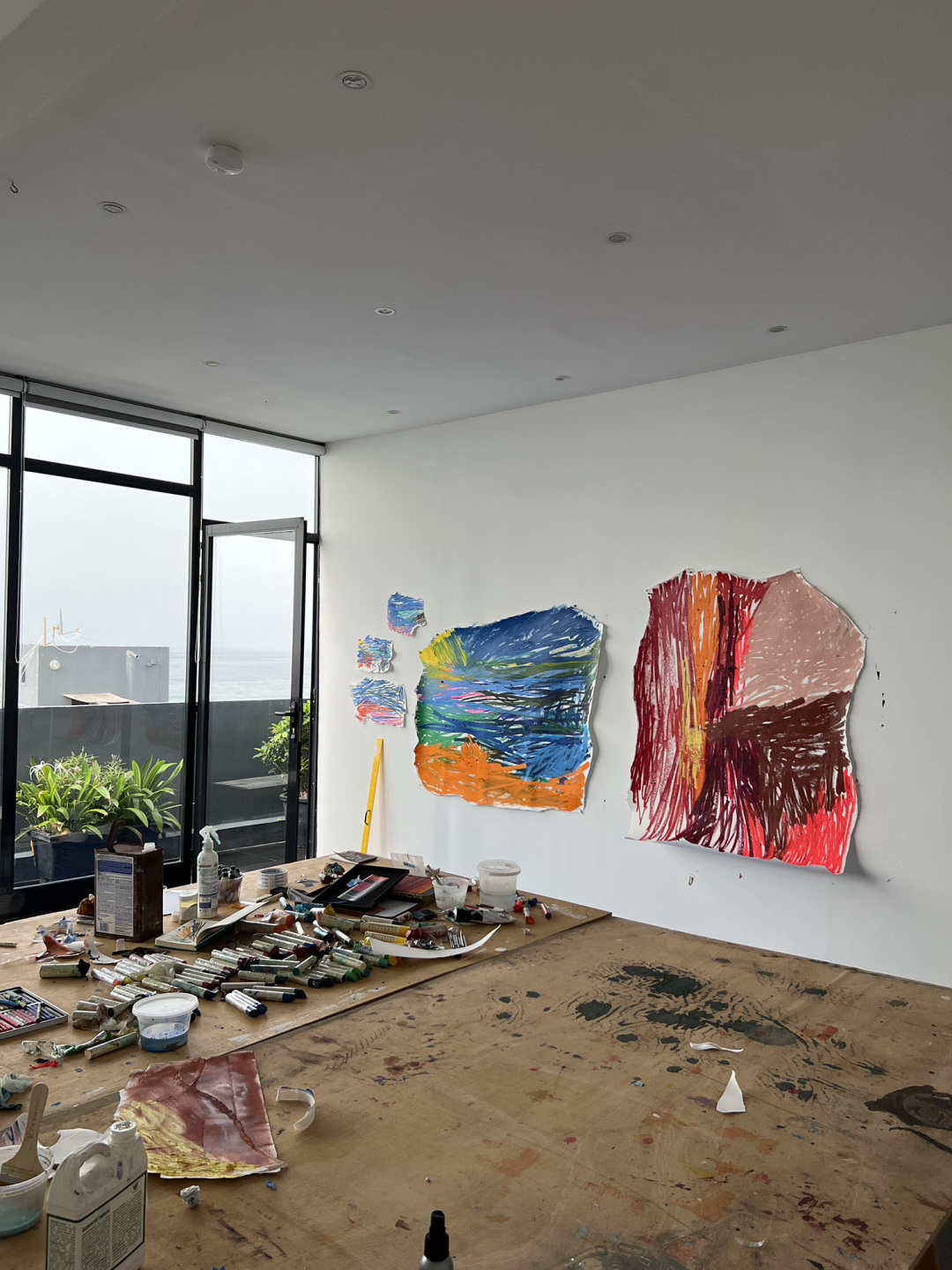
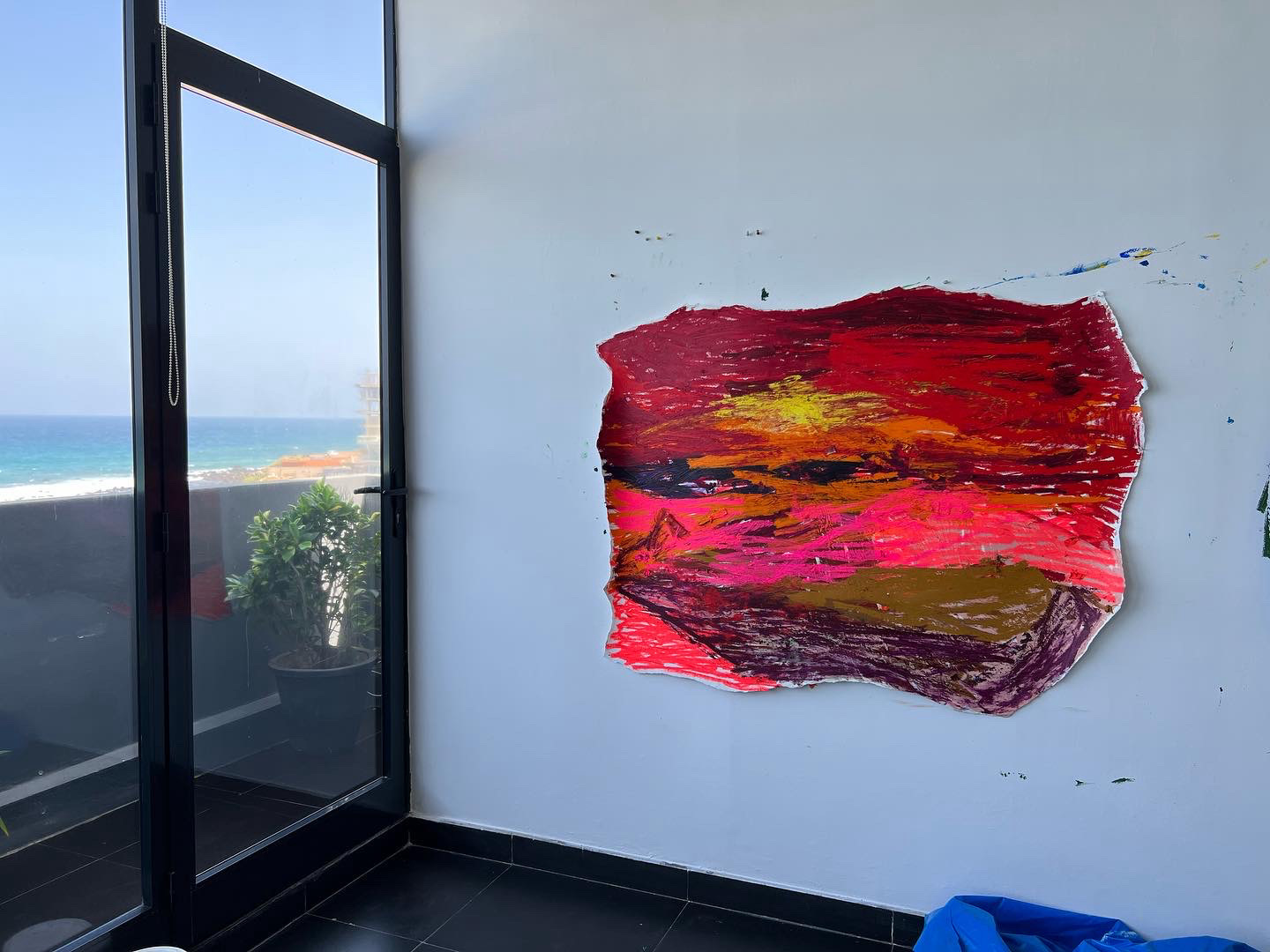
Paul Verdell
The last month has proven transformative for the Detroit-based artist Paul Verdell. After returning from the Black Rock residency in Dakar, Senegal, the artist has renewed his emphasis on landscape works inspired by the colors and textures of the West African capital. The self-proclaimed “Pastel Papí” renders his signature portraits and still lifes in oil paints, pastels, and crayons, adding playful texture and dimensional mark making to his two-dimensional works.
“Before I got into Black Rock, my work was mostly portraiture and narrative paintings,” Verdell recalls. But in Dakar, Verdell found inspiration in the sunsets. “Dakar has amazing sunsets. I could watch them just about every day,” he says of the perspective-shifting landscape. “My studio at Black Rock had large windows overlooking the ocean that inspired me as well. My work is really about bringing land onto the canvas through abstraction. I don’t photograph landscapes for reference. I go through my memory bank to create the works focusing on the color and textures.” Back in Detroit with his memory bank full of new textures and landscapes, Verdell is hard at work on his next series.
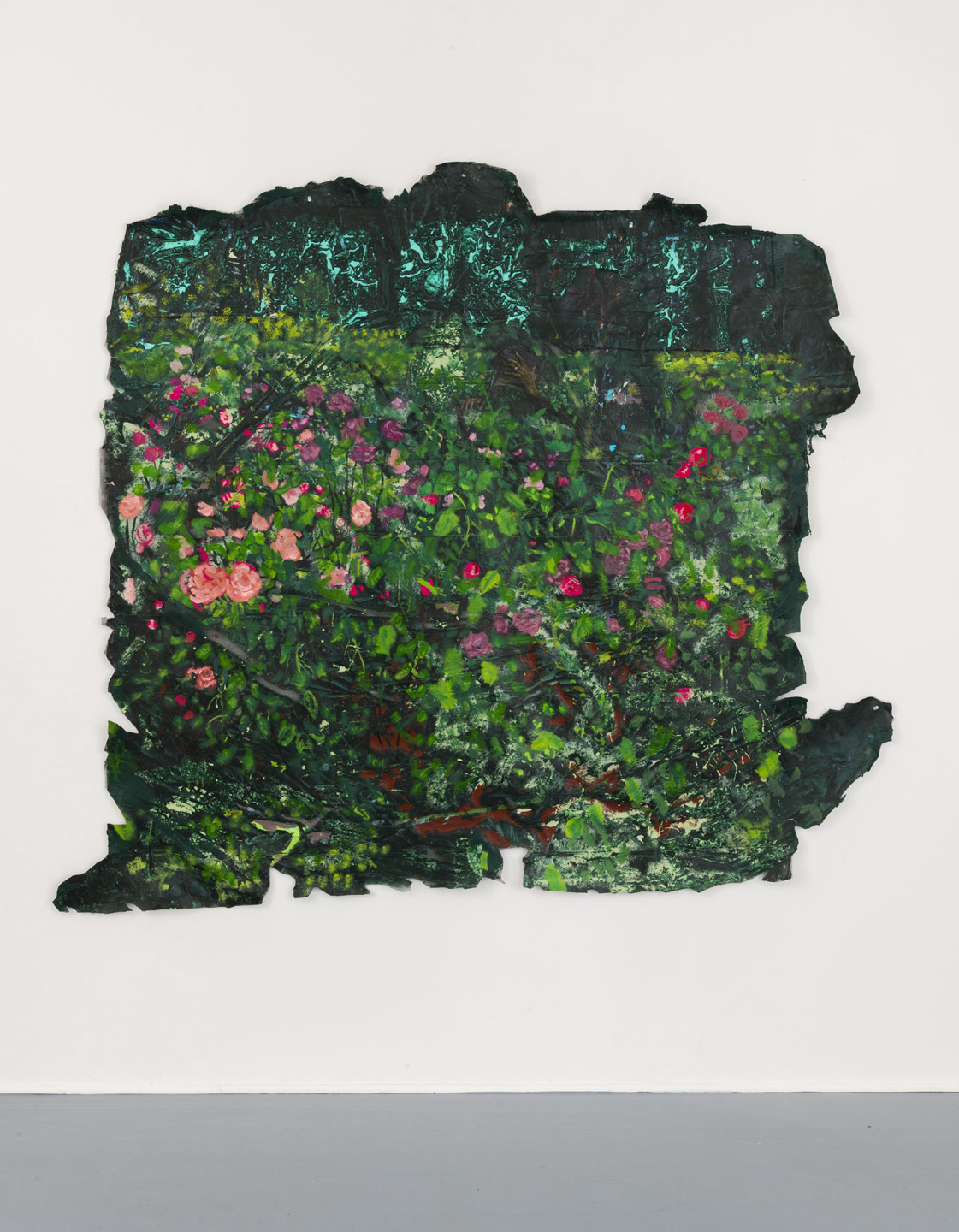
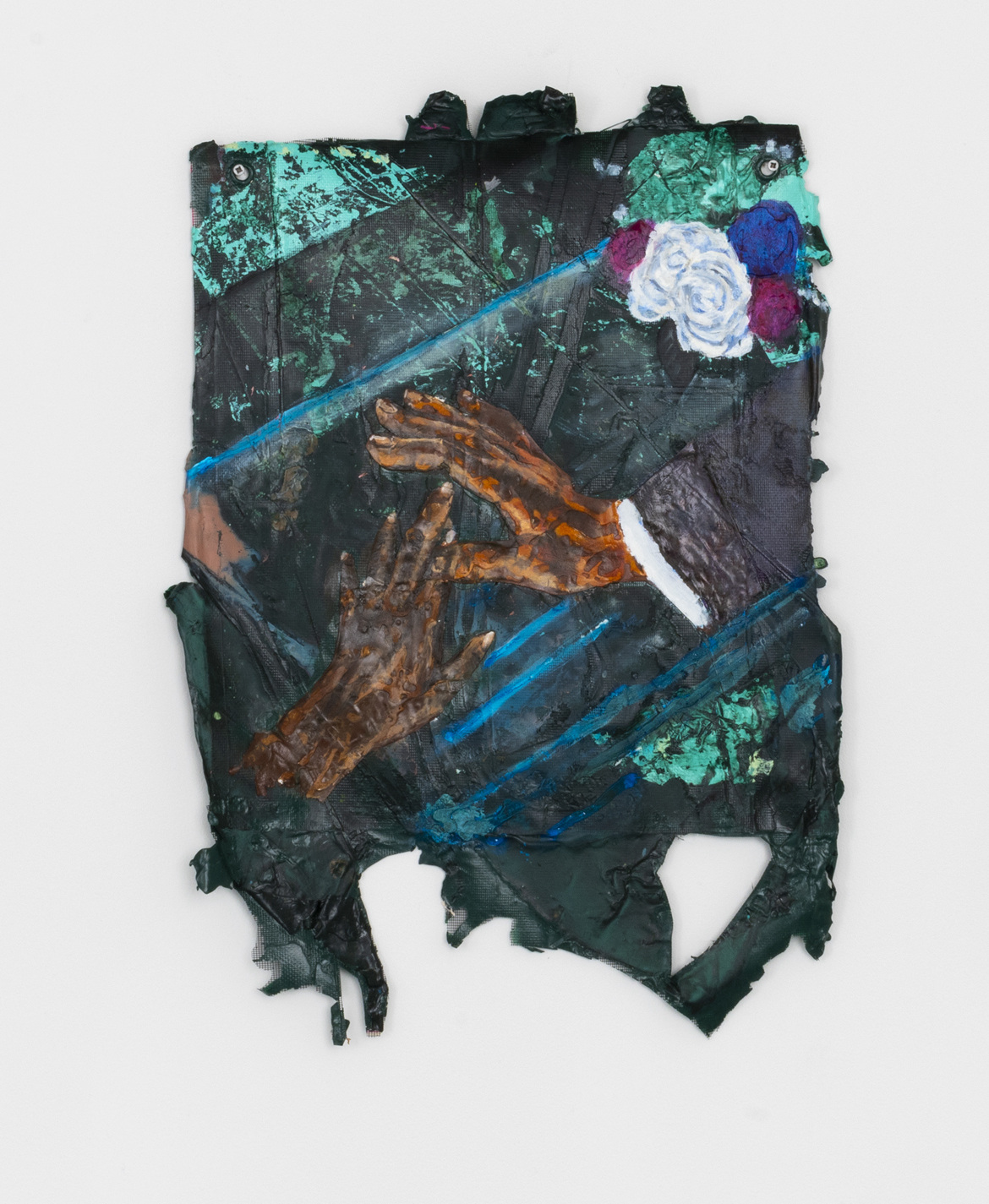
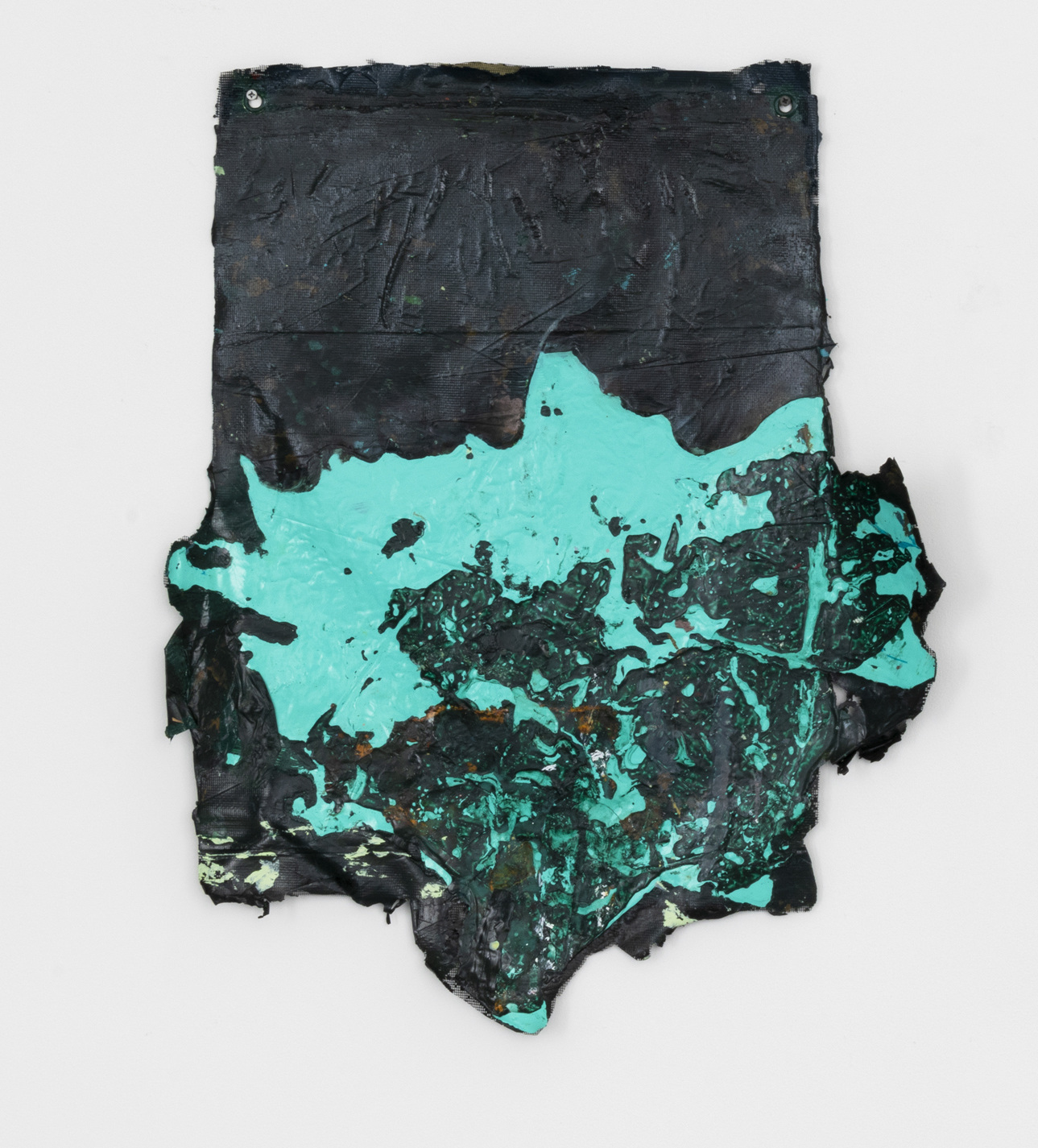
Kirk Henriques
For Kirk Henriques, every trip opens new doors. Originally from Georgia, the artist recently relocated to Mexico after falling in love with the country on a whirlwind trip. Now, he’s the artist-in-residence at West Palm Beach’s New Wave residency program until January 2023, where he’s channeling the sights of his adopted home—textured walls, colorful chipped paint—into a new body of work. “Mexico has caused me to be more direct and intentional in my compositions,” he explains, citing his own alienness in a new place as a major source of inspiration. “I’m currently using fewer colors in my abstract paintings, and in my figurative work there are fewer figures. I believe that comes from me not being fluent in Spanish and having to communicate with fewer words.” This outsider perspective has translated into his paintings “by nature of [him] allowing the works to breathe.”
For Henriques, the sense of liberation that comes from making a home somewhere new has also filtered into his work. “These travel experiences and the ability to create work wherever I am gives me the freedom and depth I’m looking for,” he says. “Experimentation and discovery are two things I value most.”










 in your life?
in your life?

